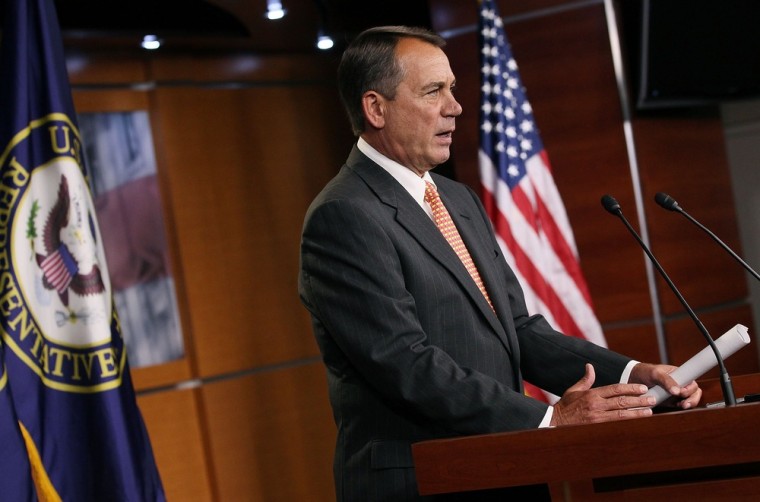The breakdown of talks between the White House and congressional Republicans has intensified worries about the financial bomb known as the national debt. Without serious budget reforms, that bomb will almost certainly explode — with widespread collateral damage to the U.S. economy and the global financial system.
But no one can say for certain just when the bomb will go off. The fuse may be longer than many people assume.
Debt-reduction talks came grinding to a halt Thursday when Republicans pulled out, blaming Democrats for demanding tax increases rather than accepting cuts in federal services.
The clock is ticking. The Congressional Budget Office said this week that the national debt is on pace to equal the gross domestic product within a decade, and warned of a European-style crisis unless Congress moves to realign the budget.
“There comes a point when you have a reckoning,” said former New York Gov. George Pataki, a Republican who chairs No American Debt. “You see that in Greece. If we don't get our house together we'll be the next country to deal with that.”
There’s widespread agreement among economists that without big changes that day of reckoning is coming. They also agree on the likely scenario when the bomb explodes. As buyers of U.S. debt get increasingly nervous about the government’s ability to make good on its IOUs, they demand higher interest rates.
Those higher rates raise the cost for businesses to borrow for new trucks or capital equipment. Home buyers have to pay more for mortgages. Those higher rates put the brakes on the economy.
“Rising rates also means that the government needs to pay more interest, and that in turn gets piled onto the debt,” said Mark Zandi, chief economist at Moody’s Analytics. “That makes investors more worried and they jack up rates even more. So you get into this negative feedback loop and ultimately, you have default.”
But there’s far less agreement on just when that day of reckoning will arrive or what, exactly, creates the tipping point that sends rates spiraling higher.
One widely cited — and much debated — paper published last year by economists Carmen Reinhart and Kenneth Rogoff looked at decades of data for 20 developed countries to better understand the impact of public debt on economic growth. They concluded that rising debt has relatively little impact on growth until it reaches about 90 percent of GDP, after which there are clear indications of slower growth.
By that measure, the U.S. still has some time before the debt bomb explodes. The current national debt represents about 69 percent of GDP, according to the CBO. The agency predicts that without big policy changes, debt will hit 109 percent — the record set in World War II — by 2023.
Even without immediate changes, the federal budget numbers are moving in the right direction — in the short term. As the economy improves, the deficit is on track to shrink as the stimulus fades, federal spending flattens out and tax revenues rise (they’re up 10 percent over last year). Troop drawdowns from Iraq and Afghanistan also could help cut spending.
So far, there’s little evidence that the rising national debt is “crowding out” private investment. That’s because interest rates are extremely low by historical standards.
Money is cheap in part because of the Federal Reserve's unprecedented policy of holding short-term rates close to zero. Private borrowers are also benefiting from strong demand for U.S. Treasuries. As bad as U.S. budget policies are, investors still see U.S. government securities as a safe haven from even bigger financial nightmares elsewhere in the world.
The real U.S. budget busters are still further out — as the government faces the rising cost of making good on Social Security and Medicare payments pledged to the aging baby boomer population. Unless those programs are put on a better financial footing — with higher tax contributions, benefit cuts or both — the long-term numbers just don’t add up. Borrowing to make up the difference can’t go on forever.
But no one can say with any certainty just how long it takes to reach that day of reckoning when the debt pile comes tumbling down.
“Look at Japan, which has public debt that in gross terms amounts to 200 percent of GDP,” said Paul Ashworth, chief U.S. economist at Capital Economics. “And they have interest rates that are lower than the U.S.”
Still, there’s widespread agreement among economists that the consequences of a U.S. debt meltdown are much too dangerous for the government to continue to press its luck. It could happen tomorrow — or not happen for years. But it wouldn’t be pretty.
“It’s fair to say that if we don’t make significant policy changes, a financial crisis is inevitable which will shake the global economy to its core,” said Zandi. “It will be serious.”
